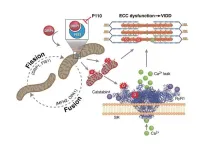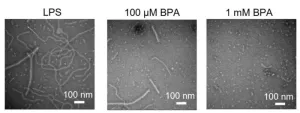(Press-News.org) New York, NY (November 7, 2023) — Diagnosing early-stage lung cancer with low-dose computed tomography (CT) screening drastically improves its cure rate measured over a 20-year period, according to a large-scale international study by Mount Sinai researchers published in Radiology.
The results show that patients diagnosed with lung cancer via CT screening have a 20-year survival rate—an approximation of the cure rate—of 81 percent. Among the 1,257 participants diagnosed with lung cancer, 81 percent had stage I disease and their long-term survival rate was 87 percent. If diagnosed in the earliest stage I (≤10mm), it was 95 percent.
In the United States, the average five-year survival rate for all lung cancer patients is 25.4 percent because only 21 percent of lung cancers are diagnosed at an early stage. More than half of the people with lung cancer die within one year of their diagnosis, making it the leading cause of cancer deaths. By the time symptoms appear, it is often too late.
The findings are the latest to demonstrate the importance of routine early screening in detecting cancers when they are small enough to be cured. Unfortunately, fewer than 6 percent of the people who are eligible for screening are currently getting it.
“While screening doesn’t prevent cancers from occurring, it is the major tool to identify lung cancers in their earliest stage when they can be cured,” said the study’s lead author, Claudia Henschke,PhD, MD, Professor of Diagnostic, Molecular and Interventional Radiology and Director of the Early Lung and Cardiac Action Program (ELCAP) at the Icahn School of Medicine at Mount Sinai in New York. “Ultimately, anyone interested in being screened needs to know that if they are unfortunate enough to develop lung cancer, it can be cured if found early.”
While treatments of more advanced cancers with targeted therapy and immunotherapy have come a long way, the best tool against lung cancer deaths is early diagnosis through low-dose CT screening before symptoms occur, according to the study authors.
“Symptoms occur mainly in late-stage lung cancer,” said co- author Rowena Yip, PhD, MPH, Senior Biostatistician of ELCAP. “Thus, the best way to find early-stage lung cancer is by enrolling in an annual screening program.”
The U.S. Preventive Services Task Force recommends annual lung cancer screening with low-dose CT in adults aged 50 to 80 years who have a 20 pack-year smoking history, which equals at least a pack a day for 20 years, and who currently smoke or have quit within the past 15 years.
Dr. Henschke and colleagues have been studying the effectiveness of cancer detection with low-dose CT screening for years. The efforts of the researchers to advance CT screening for early lung disease led to the creation of the International Early Lung Cancer Action Program (I-ELCAP). Started in 1992, this multi-institution, multinational research program has enrolled more than 89,000 participants from over 80 institutions.
In 2006, the researchers identified a 10-year survival rate of 80 percent for the patients whose cancer was identified by CT screening. For this study, they looked at 20-year survival rates.
“What we present here is the 20-year follow-up on participants in our screening program who were diagnosed with lung cancer under annual screening and subsequently treated,” Dr. Henschke said. “The key finding is that even after this long a time interval they are not dying of their lung cancer. And even if new lung cancers were found over time, as long as they continued with annual screening, they could be cured.”
“Ultimately, the critical clinically relevant information for people interested in screening relates to understanding their chance of being diagnosed with lung cancer, and if detected during screening, how curable it would be compared to being diagnosed based on symptoms.”
Co-authors in New York City are David F. Yankelevitz, MD, Director of the Lung Biopsy Service; Emanuela Taioli, MD, PhD; and Raja M. Flores, MD, at Icahn Mount Sinai and Javier J. Zulueta, MD at Mount Sinai West. Other co-authors include Nasser Altorki, MD, James P. Smith, MD, Steven Markowitz, MD, Cheryl Aylesworth, MD, Shahriyour Andaz, MD, and Cynthia Chin, MD, from the United States; Dorith Shaham, MD, from Israel; Karl Klingler, MD, from Switzerland; and Luis M. Seijo, MD, from Spain.
About the Mount Sinai Health System
Mount Sinai Health System is one of the largest academic medical systems in the New York metro area, with more than 43,000 employees working across eight hospitals, over 400 outpatient practices, nearly 300 labs, a school of nursing, and a leading school of medicine and graduate education. Mount Sinai advances health for all people, everywhere, by taking on the most complex health care challenges of our time — discovering and applying new scientific learning and knowledge; developing safer, more effective treatments; educating the next generation of medical leaders and innovators; and supporting local communities by delivering high-quality care to all who need it.
Through the integration of its hospitals, labs, and schools, Mount Sinai offers comprehensive health care solutions from birth through geriatrics, leveraging innovative approaches such as artificial intelligence and informatics while keeping patients’ medical and emotional needs at the center of all treatment. The Health System includes approximately 7,300 primary and specialty care physicians; 13 joint-venture outpatient surgery centers throughout the five boroughs of New York City, Westchester, Long Island, and Florida; and more than 30 affiliated community health centers. We are consistently ranked by U.S. News & World Report's Best Hospitals, receiving high "Honor Roll" status, and are highly ranked: No. 1 in Geriatrics and top 20 in Cardiology/Heart Surgery, Diabetes/Endocrinology, Gastroenterology/GI Surgery, Neurology/Neurosurgery, Orthopedics, Pulmonology/Lung Surgery, Rehabilitation, and Urology. New York Eye and Ear Infirmary of Mount Sinai is ranked No. 12 in Ophthalmology. U.S. News & World Report’s “Best Children’s Hospitals” ranks Mount Sinai Kravis Children's Hospital among the country’s best in several pediatric specialties.
For more information, visit https://www.mountsinai.org or find Mount Sinai on Facebook, Twitter and YouTube.
END
Lung cancer screening dramatically increases long-term survival rate
2023-11-07
ELSE PRESS RELEASES FROM THIS DATE:
New strategy may halt tumors' aggressive response to glucose deprivation
2023-11-07
BACKGROUND
One of the hallmarks of cancer cell development is its dependence on sugar, especially glucose, to grow and divide. Scientists have long been studying how to restrict or block this process that promotes tumor growth, called glycolysis, from happening as a possible effective strategy against cancer.
Previously, researchers from the UCLA Health Jonsson Comprehensive Cancer Center identified a specific protein sodium glucose transporter 2, or SGLT2, as a mechanism that lung cancer cells can utilize to obtain glucose. Drugs that inhibit SGLT2 are already FDA approved for other conditions and the UCLA team found these drugs could also delay the development ...
Giles Robinson, MD, named director of the Neuro-Oncology Division at St. Jude Children’s Research Hospital
2023-11-07
St. Jude Children’s Research Hospital today announced Giles Robinson, M.D., has assumed the role of director for the Department of Oncology’s Division of Neuro-Oncology. He has also become co-leader of the Neurobiology and Brain Tumor Program within the St. Jude Comprehensive Cancer Center. These combined units comprise one of the largest clinical brain tumor programs in North America.
“Dr. Robinson has been an exemplary member of St. Jude since joining as a hematology/oncology fellow in 2007,” said Julie R. Park, M.D., Department of Oncology ...
MD Anderson and Jazz Pharmaceuticals announce five-year collaboration to evaluate zanidatamab in HER2-expressing cancers
2023-11-07
HOUSTON and DUBLIN ― The University of Texas MD Anderson Cancer Center and Jazz Pharmaceuticals plc today announced a five-year strategic research collaboration agreement to evaluate zanidatamab, Jazz’s investigational HER2-targeted bispecific antibody, in multiple HER2-expressing cancers.
The collaboration will combine MD Anderson’s translational medicine and clinical research expertise with Jazz’s expanding oncology drug development capabilities to investigate the potential of zanidatamab as monotherapy and in combination with other treatments for patients with different tumor types and stages. This includes its possible applicability ...
An ammonia trail to exoplanets
2023-11-07
They reveal the origin of wine, the age of bones and fossils, and they serve as diagnostic tools in medicine. Isotopes and isotopologues – molecules that differ only in the composition of their isotopes – also play an increasingly important role in astronomy. For example, the ratio of carbon-12 (12C) to carbon-13 (13C) isotopes in the atmosphere of an exoplanet allows scientists to infer the distance at which the exoplanet orbits its central star.
Until now, 12C and 13C bound in carbon monoxide were the only isotopologues that could be measured in the atmosphere of an exoplanet. Now a team of researchers has succeeded in detecting ammonia isotopologues ...
Online shopping for tobacco products rises with California flavor restrictions
2023-11-07
Online shopping for cigarettes and vaping products increased significantly in the weeks following the implementation of SB-793, a 2022 California law prohibiting the sale of flavored tobacco products. Researchers at the Herbert Wertheim School of Public Health and Human Longevity Science at University of California San Diego identified potential loopholes in tobacco control policies due to the absence of explicit regulations on e-commerce sales in retailer licensing programs.
Reporting in the journal Tobacco Control on Nov. 7, 2023, researchers assessed the ...
UTSA researchers discover new method to inhibit cholera infection
2023-11-07
Karl Klose, director of The South Texas Center for Emerging Infectious Diseases (STCEID) and the Robert J. Kleberg, Jr. and Helen C. Kleberg College of Sciences Endowed Professor, coauthored a research article with Cameron Lloyd ’23, a UTSA doctoral student who graduated in August with a Ph.D. in molecular microbiology and immunology under the guidance of Klose.
The research paper investigates a novel strategy for inhibiting the spread and infection of Vibrio cholerae, the bacteria responsible for the disease, cholera.
The research article is entitled, “A peptide-binding ...
The molecular basis of ventilator-induced diaphragm weakness
2023-11-07
A study presents evidence that mitochondrial fragmentation is a proximal mechanism underlying ventilator-induced diaphragm dysfunction (VIDD)—and identifies a possible therapeutic to limit diaphragm atrophy during a stay in intensive care. Previous research has established that many of the cellular pathways responsible for VIDD are kicked off by oxidative stress stemming from diaphragm inactivity. Stefan Matecki and colleagues studied the molecular causes of this oxidative stress in mice. Just six hours on mechanical ventilation was enough to increase expression of dynamin-related protein 1 (DRP1), which is involved in mitochondrial ...
Bisphenol A and asthma in mice
2023-11-07
The “hygiene hypothesis” posits that allergic asthma can be triggered by a childhood environment that is too clean and sterile. One studied mechanism underlying this relationship is the influence of microbial lipopolysaccharides (LPS), which train the immune system. In the absence of LPS, Toll-like receptors in the human body will become more sensitive, which can lead to an exaggerated allergic response to triggers such as house dust mites. Mingliang Fang and colleagues explored how the environmental pollutant bisphenol ...
Mountain goats seek snow to shake off insects
2023-11-07
Losing summer snow patches may hit mountain goats hard, according to a study that suggests that goats seek out snow to avoid biting insects. Many cold-adapted species take advantage of patches of snow that linger through the summer, as corridors for travel, sources of drinking water, zones for cooling off, or places to play. As the climate changes, many species will have reduced access to snow patches. Forest Hayes and Joel Berger explored what this lack of summer snow might mean for mountain goats (Oreamnos americanus) in Glacier National Park, which has lost 85% of its glaciers since 1850. The team studied goats in the park—along with another population 1,000 ...
Mapping the landscape: Amsterdam UMC receives millions to lead European research into obesity
2023-11-07
Obesity is a growing health problem that disproportionately affects people and communities with a low socio-economic position in Europe. Thanks to a Horizon grant worth more than 10 million euros, Jeroen Lakerveld, epidemiologist at Amsterdam UMC, is now set to lead a European consortium in better identifying the causes of obesity and designing guidelines to tackle the problem.
"Social and cultural factors play a role in our lifestyle behaviours but so do our genes and the environment in which we live and work. Residents of neighbourhoods are not equally exposed to unhealthy factors: ...






